We offer medical detox and multiple addiction treatment options in our
luxury treatment centres in Port Hope, Cobourg, and Ottawa.
What is BORG Drinking?
Emergency departments across college towns report an alarming surge in alcohol poisoning cases linked to decorated gallon jugs. What is BORG drinking? BORG stands for "Blackout Rage Gallon" – a viral social media trend involving massive alcohol quantities in gallon containers. The BORG drinking trend has exploded on TikTok with over 74 million views, presenting itself as a "safer" party alternative while promoting extreme binge drinking. Medical experts universally condemn these safety claims. At the Canadian Centre for Addictions, we recognize how viral trends can escalate into serious substance abuse disorders requiring professional intervention.
Key Takeaways
- Viral Misinformation: BORGs spread through social media with false safety claims while containing dangerous alcohol quantities that promote extreme binge drinking behaviours.
- Medical Opposition: Emergency physicians and addiction specialists universally reject safety claims, calling BORGs more dangerous than traditional alcoholic beverages.
- High-Risk Population: College students and young adults face significant vulnerability to developing problematic drinking patterns through BORG participation.
- Emergency Crisis: Mass hospitalizations have already occurred, with 46 students requiring emergency treatment in a single weekend incident.
- Treatment Available: Early intervention and specialized addiction treatment can prevent long-term consequences and support successful recovery.
BORG Drink Meaning: Decoding the "Blackout Rage Gallon"
The acronym BORG reveals disturbing intentions behind this viral phenomenon. "Blackout" refers to alcohol-induced memory loss, "Rage" suggests intense intoxication, and "Gallon" describes the container size designed for extreme consumption. Despite the sinister name, this trend appeals to young people seeking social connection while presenting itself as a "safer" alternative to traditional party drinks.
A typical BORG drink follows a dangerous formula: half a gallon of water combined with up to a fifth of vodka, equivalent to approximately 17 standard shots of alcohol. Additional ingredients include colourful drink mixes, electrolyte powders, and sometimes caffeinated flavour enhancers that create deceptively appealing beverages, masking lethal alcohol content.
These gallon jugs become decorated party accessories, with users creating catchy phrases like "SpongeBorg Square Pants," "The BORGfather," and "Lord of the BORGs." This creative personalization transforms potentially deadly drinks into seemingly harmless items, contributing significantly to widespread appeal among college students.

The BORG drink's meaning represents a concerning cultural shift that eliminates traditional drinking safeguards. Unlike beer pong or shared punch bowls that require social interaction and create natural consumption limits, BORGs enable isolated consumption of massive BORG alcohol quantities while maintaining illusions of responsibility through personalization and dilution.
BORG drinking originated around 2018 in college party environments, particularly at outdoor daytime events called "darties." The COVID-19 pandemic accelerated its spread through TikTok, where creators shared recipes and promoted supposed benefits. This social media amplification transformed a contained campus trend into a nationwide phenomenon affecting thousands of young adults.
Common BORG Recipes and Ingredients
Standard BORG preparation follows this dangerous pattern:
| Ingredient Type | Common Brands | Typical Amount | User's Perceived Purpose |
| Base Alcohol | Vodka, Rum, Tequila | 750ml (1 fifth) | Main intoxicating component |
| Flavor Enhancers | MiO, Crystal Light | 2-4 servings | Improve taste, add caffeine |
| Electrolytes | Pedialyte, Liquid IV | 1-2 packets | Prevent hangovers, hydration |
| Mixers | Kool-Aid, Tang | 1-2 packets | Mask alcohol taste, add colour |
| Water Base | Tap/bottled water | 32-40 ounces | Dilute alcohol, increase volume |
Why Users Add These Ingredients:
- Taste improvement through flavouring makes alcohol more palatable for extended consumption
- Visual appeal via bright colours disguises the dangerous nature of the contents
- Perceived safety benefits from electrolytes create false confidence about hangover prevention
- Energy enhancement through caffeine additions for sustained party participation
Users specifically choose these combinations, believing they create a "smarter" way to drink alcohol. Many follow TikTok recipes claiming to provide party endurance while avoiding negative consequences, not understanding the serious health risks these combinations actually create.
The Dangerous Reality Behind BORG Drinking Claims

Medical professionals universally condemn BORG's safety claims. Consuming a massive amount of such a drink can lead to potentially life-threatening alcohol poisoning because the alcohol quantity totally overwhelms the capacity of the liver to metabolize it.
Why Dilution Creates False Security
- Total alcohol content remains unchanged regardless of water addition
- The liver can only process one standard drink per hour, regardless of dilution
- Large volume creates a deceptive moderation appearance while delivering dangerous quantities
- Water doesn't neutralize alcohol's toxic effects on vital organs
Medical science clearly demonstrates that electrolytes cannot prevent alcohol poisoning or reduce liver toxicity. While hydration may minimize some hangover symptoms like headaches, it provides no protection against the serious health consequences of excessive alcohol consumption. This misconception encourages repeated dangerous drinking patterns by creating false confidence in BORG safety.
Why BORGs Promote Dangerous Binge Drinking
Several psychological and physiological factors combine to make BORG consumption far more dangerous than traditional drinking methods, creating perfect conditions for extreme alcohol overconsumption:
- Volume Psychology Effects
The gallon container size creates powerful psychological effects that encourage excessive consumption. These large containers eliminate natural serving size cues that normally limit consumption, while "completion pressure" encourages finishing the entire contents regardless of intoxication level. Personal ownership creates an investment mentality requiring "getting money's worth," and the large volumes normalize excessive consumption through visual familiarity.
- Caffeine's Dangerous Masking Mechanisms
The physiological interaction between caffeine and alcohol creates particularly dangerous scenarios. Caffeine stimulates the central nervous system while alcohol depresses it, creating artificial alertness that masks severe intoxication. Users feel capable and alert despite dangerous blood alcohol concentrations, preventing recognition of serious impairment. This BORG drinking combination enables continued consumption beyond safe thresholds, often leading to life-threatening alcohol poisoning.
- Social and Measurement Factors
Home preparation and social factors compound these consumption risks significantly. Home preparation lacks the precision of commercial serving standards, with users consistently underestimating pour amounts, especially without measuring tools. Social media pressure to create "impressive" BORGs encourages stronger recipes, while drinking BORG becomes a personal achievement rather than a shared social activity.
Serious Health Risks and Medical Emergencies
Alcohol Poisoning and Emergency Room Visits
The University of Massachusetts Amherst incident demonstrates BORG dangers in stark terms. On March 4, 2023, the BORG drinking trend resulted in 46 student hospitalizations during a single weekend, requiring 32 ambulances – a record number for any campus event. Students arrived with severe alcohol intoxication, many unconscious or semi-conscious, requiring immediate medical intervention to prevent fatal outcomes.
Understanding Blood Alcohol Content Danger Zones:
- 0.08%: Legal intoxication threshold
- 0.15%: Severe impairment with frequent vomiting
- 0.25%: Unconsciousness and life-threatening complications
- 0.35%+: Often fatal without immediate emergency medical care
Beyond Immediate Risks: Long-term Consequences
Academic and Professional Devastation:
- Declining grades, missed classes, and academic probation
- Loss of scholarships, financial aid, or program dismissal
- Damaged relationships with professors and academic mentors
- Career limitations requiring background checks or professional licensing
Legal and Social Ramifications:
- DUI charges with lasting criminal record implications
- Underage drinking citations affecting future opportunities
- Campus disciplinary actions, including potential expulsion
- Deteriorating family relationships and social isolation
Health Complications: Repeated BORG consumption creates cumulative health risks, including liver damage, cardiovascular problems, and neurological impairment. The extreme alcohol quantities involved accelerate these health consequences compared to traditional drinking patterns, with some effects becoming irreversible even in young adults.
BORG Drinking and Addiction Risk Factors
The extreme nature of BORG consumption creates particularly high addiction vulnerability through multiple interconnected mechanisms that affect young adults during critical developmental periods.
High-Risk Categories
- Biological Vulnerability Factors
Family history of addiction increases genetic predisposition, while early alcohol use accelerates addiction development pathways. Co-occurring mental health conditions create self-medication patterns, and ongoing brain development until age 25 makes young adults particularly susceptible to substance abuse disorders.
- Environmental and Social Amplification
College drinking culture normalizes dangerous consumption as socially acceptable behaviour. Social media algorithms continuously promote drinking content to engaged users, while peer pressure within "darty" culture encourages regular participation. Academic stress and social transitions increase substance use appeal as a coping mechanism.
- Behavioural Pattern Development
Regular BORG participation creates rapid tolerance, requiring increased consumption for desired effects. Users often progress from occasional participation to weekly or daily consumption, indicating concerning development patterns. The social identity formation around drinking activities, combined with failed attempts to reduce consumption, demonstrates classic addiction progression.
- Social Media Algorithm Effects
TikTok's recommendation system creates dangerous feedback loops by continuously exposing users to drinking content based on engagement patterns. Students report feeling pressure to document their BORG creations and consumption, transforming private drinking into public performance that escalates competitive behaviours and normalizes extreme consumption among peer groups.
Recognizing Warning Signs and Getting Help

When BORG Drinking Becomes a Problem
Recognizing problematic drinking patterns requires honest assessment of changes in behaviour, academic performance, and personal relationships. Warning signs often develop gradually, making early identification critical for successful intervention.
Key warning signs:
- Increasing frequency from occasional to regular BORG use
- Drinking alone or planning schedules around drinking opportunities
- Academic performance decline and missed classes
- Financial strain from alcohol purchases
- Anxiety when alcohol isn't accessible
- Defensive responses to drinking concerns
- Failed promises about reducing consumption
- Continued use despite negative consequences
Emergency Response and Medical Intervention
Alcohol poisoning symptoms require immediate recognition and response. Key indicators include
- Mental confusion, disorientation, or complete unconsciousness
- Vomiting, especially while unconscious or semi-conscious
- Seizures, convulsions, or uncontrolled muscle movements
- Slow, irregular, or shallow breathing (fewer than 8 breaths per minute)
- Irregular heartbeat, chest pain, or cardiovascular distress
- Low body temperature, blue-tinged skin, or pale complexion
- Lack of response to loud noises, physical stimulation, or pain
Call 911 immediately for unconscious individuals, those having seizures, or anyone with breathing difficulties. Emergency medical services can provide life-saving interventions that cannot be replicated through home remedies or waiting for symptoms to improve naturally. Contact Poison Control at 1-844-764-7669 for conscious individuals experiencing alcohol poisoning symptoms. Poison Control specialists can provide immediate guidance while determining whether emergency medical care is necessary.
While you are waiting for the help to arrive, take these critical actions:
- Position the person on their side to prevent choking on vomit
- Monitor breathing and consciousness levels continuously
- Keep them warm with blankets, but avoid overheating
- Stay with them until professional medical help arrives
- Provide emergency responders with consumption information
What NOT to do during emergencies:
- Don't give coffee, food, medications, or additional substances
- Don't attempt to induce vomiting or use cold water immersion
- Don't leave them alone to "sleep it off" without constant supervision
- Don't assume they'll recover naturally without professional intervention
- Don't worry about getting in trouble – focus on saving their life
Treatment and Recovery Resources

The Canadian Centre for Addictions specializes in young adult addiction treatment, recognizing that college-age individuals require specialized approaches addressing their unique developmental, academic, and social needs.
Outpatient programs allow students to continue academic responsibilities while receiving professional support and learning real-world coping skills within their natural college environments. Students participate in individual counselling, addressing personal addiction factors and accessing group therapy with peer support and accountability. This approach helps maintain important social connections while developing healthier patterns.
Inpatient treatment becomes necessary for severe addiction requiring medical detoxification and supervision, or when multiple outpatient attempts have failed. Students with co-occurring mental health conditions needing intensive psychiatric care, safety concerns requiring removal from drinking environments, or medical complications requiring constant monitoring benefit from residential programs.
Both outpatient and inpatient programs include integrated treatment elements designed to address all aspects of addiction recovery and successful reintegration:
- Medical assessment, including detoxification when medically necessary
- Individual therapy addressing underlying addiction causes and triggers
- Group counselling providing peer support and accountability systems
- Family education teaching healthy communication and boundary setting
- Academic planning ensuring successful college reintegration and goal achievement
- Life skills development, including stress management and relapse prevention
Furthermore, family involvement in the recovery process proves critical for long-term success. Our programs include family education, communication training, and support groups that help families understand addiction while learning how to provide appropriate support without enabling destructive behaviours.
Continuing education and career protection strategies help students maintain their academic goals while addressing addiction issues. We work with colleges to arrange medical leaves, academic accommodations, and gradual reintegration plans that protect students' educational investments.
BORG drinking represents a dangerous phenomenon that can establish lifelong patterns of problematic alcohol use among vulnerable young adults. Students and families must critically evaluate viral trends rather than accepting false safety claims that contradict medical consensus.
Recovery remains possible at any stage, with early intervention providing optimal outcomes. The Canadian Centre for Addictions offers specialized programs designed specifically for young adults facing these challenges. Don't wait for a crisis – professional support can prevent devastating consequences while preserving educational and future opportunities.
FAQ
How much alcohol is actually in a typical BORG?
A standard BORG contains approximately 750ml of vodka (one fifth), equivalent to 17 standard shots. This represents extreme binge drinking that can cause alcohol poisoning even when consumed over extended periods.
Can drinking BORGs lead to addiction?
Regular BORG consumption significantly increases addiction risk due to high alcohol concentrations and rapid tolerance development. Young adults who regularly participate in BORG drinking face elevated risks of developing alcohol use disorders requiring professional treatment.
What should I do if someone is unconscious after drinking a BORG?
Call 911 immediately without hesitation. Position the person on their side to prevent choking, monitor their breathing, and stay with them until emergency medical services arrive. Never attempt home remedies, assume they'll recover naturally, or leave them unattended. Alcohol poisoning can be fatal and requires immediate professional medical intervention.
Are there any actual benefits to BORG drinking?
No legitimate medical benefits exist for BORG consumption. Claims about personal container control and hydration benefits are vastly outweighed by alcohol poisoning risks, addiction potential, and other serious health consequences. These perceived advantages represent dangerous misconceptions that encourage life-threatening consumption patterns rather than providing genuine safety improvements.
How can parents talk to college students about this trend?
Approach conversations with concern rather than judgment, focusing on health and safety rather than moral issues. Share factual medical information about BORG dangers, discuss family values regarding alcohol use, and maintain open communication channels. If problematic drinking patterns emerge, seek professional guidance immediately rather than attempting to address addiction issues without specialized training and resources.






